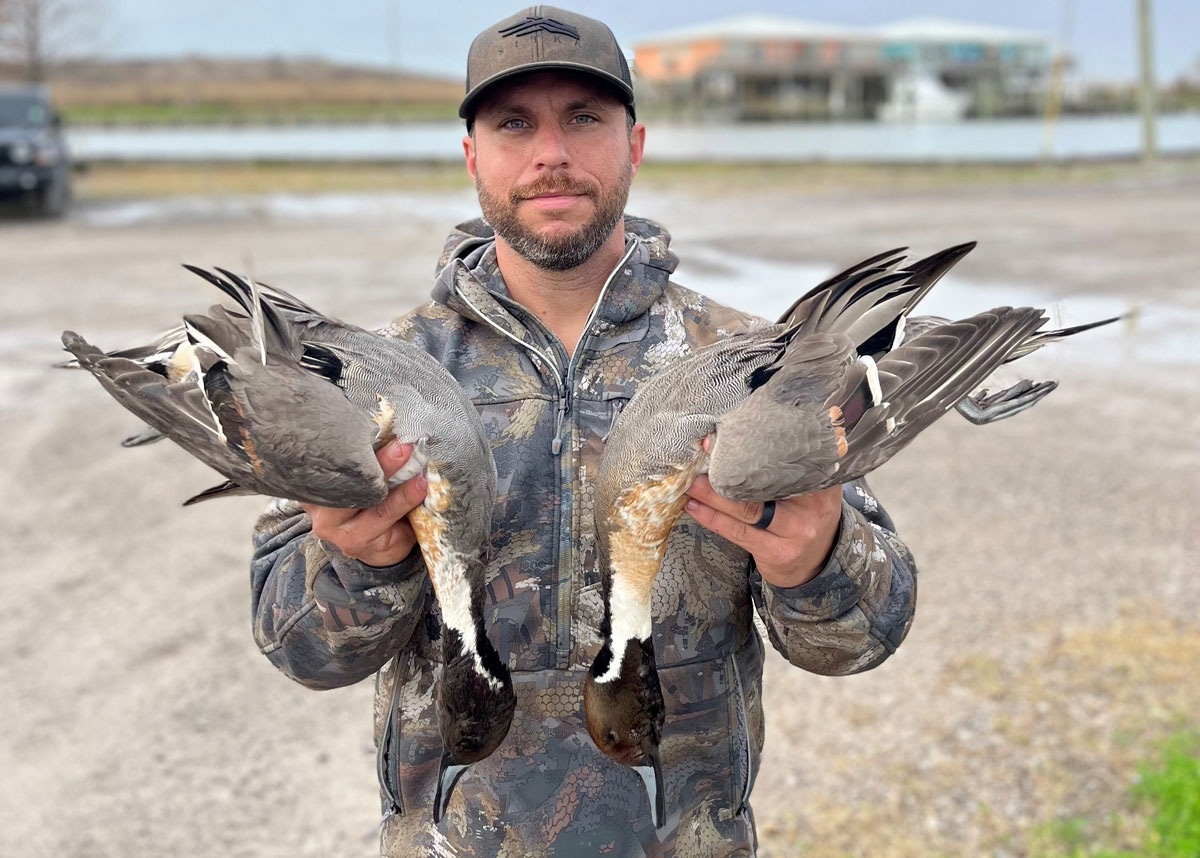
Weather proved to be the key ingredient in making for a successful 2022-2023 waterfowl season. Although the Louisiana Wildlife and Fisheries’ (LDWF) November waterfowl population survey started well below long- and short-term averages, timely cold fronts provided the water and birds duck hunters needed into the season. That bore out in the December survey, which showed a strong rebound in ducks going from 802,000 in November to 2,100,000 (a 164% increase) in December.
Jason Olszak, Waterfowl Program Manager for LDWF explained, “We had low survey numbers coming into November, but in between the survey and Opening Day we had a front push some birds down which resulted in pretty good success for the first split.”
Rains spread birds out
That weather pattern continued into December, where the LDWF observed a large increase in water impoundment across the state’s landscape. Coming off nearly drought conditions, there was significant increase from November to December in the amount of wet areas available to waterfowl.
“Those good rains spread the birds out,” Olszak said. “If hunters were able to get out and move, they were able to find fresh birds that hadn’t been worked.”
Kelly Haydel of Haydel’s Game Calls, Inc. (www.haydels.com) shared a similar perspective on the weather’s impact on the duck hunting in Bossier Parish. Around Lake Bistineau, the first part of the season was slightly below average, mainly due to the dry conditions. The rains during November created more huntable landscape and more successful duck hunts as the season progressed.
“We definitely saw improvement on the days of the fronts, but it was short lived,” Haydel said. “You had to hunt in the bad weather on those front days, and if you did, guys were killing birds.”
Weather is not always a duck hunter’s best friend. The arctic cold front around Christmas was not a big benefit to Northwest Louisiana. Haydel and other hunting buddies didn’t see a significant push of new birds. Haydel speculated why that cold front didn’t produce big duck numbers.
“What I think happened was those birds just overshot this area,” he said. “They had such cold and strong air that they just went straight to the coast.”
Safe spots
While Haydel and team had good numbers of ducks around Lake Charles in Cameron Parish, the rainy weather had a somewhat opposite effect on their lease. The rainy weather resulted in high water throughout their marsh. It also created safe spots, like little mini refuges for the ducks to feed and rest.
“It might be a cattle pasture with a little swag in it,” he said. “But with some of the rain on it, the ducks will get in there. Sometimes a few thousand will be feeding on the flooded grass seeds.”
Dustin Koeppel is an avid duck hunter, who won’t be found in the same blind twice. He attributes his productive hunts to getting the cold weather when needed and the ability to shift hunting locations when hunting pressure’s up. This season he’s been all over the Plaquemines Parish marshes, from Venice to Delacroix and Pointe a la Hache’ to Port Sulphur.
“Obviously, we had that freeze and it brought mallards down for sure,” he said. “I saw the most mallards I’ve seen and not just one or two but a decent amount all around.”

While greenheads are a rarity around the mouth of the River, Koeppel also capitalized on the usual suspects.
“It’s been the most pintail I’ve seen in Venice,” he said. “A lot of big groups of greenwings too, but not a lot of grey ducks.
“We’ve had the opportunity to share a bunch of different places to keep the pressure low. We’ve hunted Caernarvon, Pointe a la Hache’, and Bayou Bienvenue in three straight days in late January and got limits on most of the hunts.”
Looking ahead
Traditional rice field spots in the Mer Rouge and Boeuf River basin produced a good number of ducks and geese early this season with the first split rated highly by most hunters.
Olszak summarized that although the long-term numbers were slightly below average, the near term 5–10-year averages are slightly above average. This has produced better hunter bag limits than recent seasons. The LDWF will have the final harvest information confirmed with results out later this spring.
For the diehards already planning for next season, the U.S. Fish and Wildlife Service has already made its recommendations for the 2023-2024 season and the Commission typically makes a final ruling in April.
The LDWF has also recently released its proposed season dates and split, without much change to the East and West Zone splits/dates.
A couple items may peak hunter’s interest. First, the dates for teal season are proposed to open on a Friday to allow for the season to go all the way until Sept. 30. Second, is a proposal to close the season on mottled ducks for the first 15 days of the season, then one mottled duck per hunter per day for the remainder of the season. Proposals are currently open for public review and comment.
Shoot ’em up.


